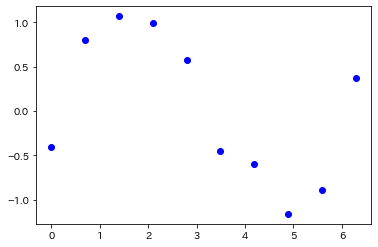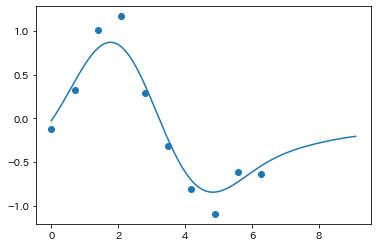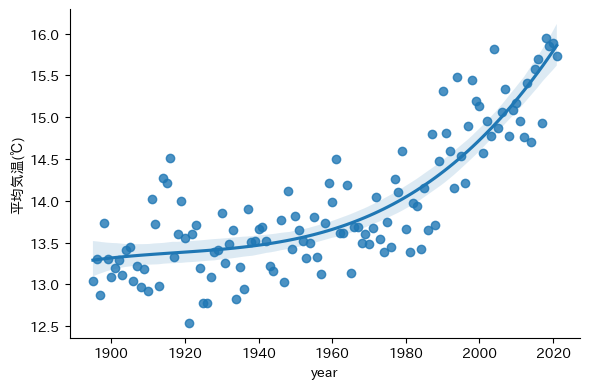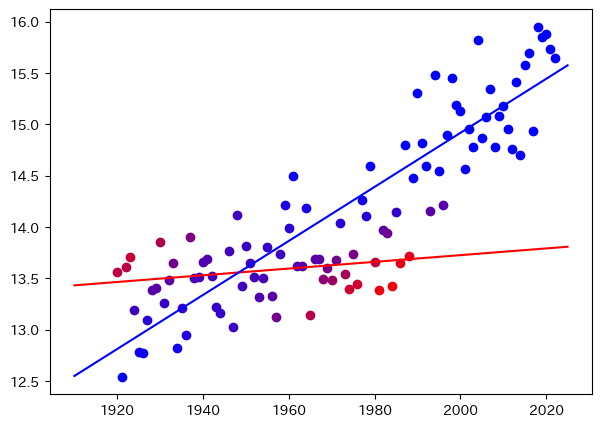2. Some aspects of data analysis: a simple example¶
Given the following data, how should you interpret? It's important to set the right context.

If we have a theoretical conjecture for the object that $y$ is linearly dependent on $x$, you may examine fitting it to $y=ax+b$ by least-square method (linear regression)

In other cases, some other fitting functions would be used, such as polynomials, trig functions, etc.

For some intrinsically complex objects such as an economic trend or its prediction, finding the fitting function is not the issue but the problem is to predict the value of $y$ for a given $x$.
Powerful prediction (regression) methods such as "Support Vector Regression" (SVR), which uses "kernel Method". It doesn't assum a fitting function function $y=f(x)$, so we can not get an explicit resultant function to compare the theory (simple principle). That is focusing on getting an excellent prediction. It is also noted that the result includes $x$-dependent probability distribution of $y$.

Thus, which method you use is crucial for the conclusion you derive. Therefore, this class is aimed to understand the characteristics of popular computer-aided statistical methods to analyze your experimental or observational data. Due to the term of the lecture being short, it will be focusing only on regression methods. (Another main class of methods is "classification", which is not covered in this class.)





